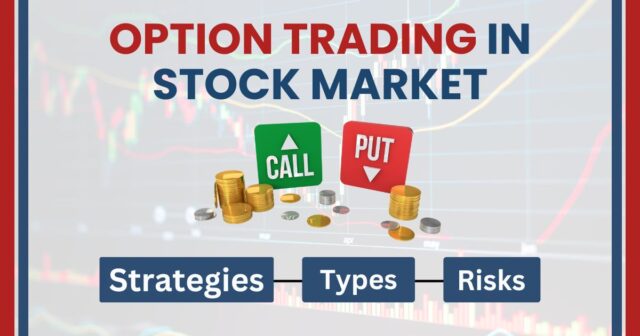Options trading, a versatile investment strategy, offers numerous ways to profit from the stock market. This strategy involves contracts that give investors the right, but not the obligation, to buy or sell an asset at a predetermined price before a specific date. Profits can be generated from options trading by leveraging several methods, which will be discussed in this comprehensive guide.
Understanding Options
Options are financial derivatives whose value is based on the price of an underlying asset, typically stocks. There are two main types of options: calls and puts. A call option gives the holder the right to buy an asset at a set price within a specific period, while a put option grants the right to sell an asset at a predetermined price within a specified time frame.
Strategies to Make Money with Options
1. Buying Call Options
A common way to make money with options is by buying call options. This strategy is employed when a rise in the stock price is expected. For instance, if a call option is purchased with a strike price of $50, and the stock price increases to $70, the option can be exercised to buy the stock at the lower price, resulting in significant profit.
2. Buying Put Options
Conversely, buying put options allows profit from a decline in stock prices. If a stock is anticipated to drop in value, a put option can be bought with a strike price above the expected decline. If the stock’s market price falls below the strike price, the option can be exercised to sell the stock at the higher price, thus generating profit.
3. Covered Call Writing
Covered call writing involves owning the underlying stock and selling call options on it. This strategy generates additional income from the premiums received for selling the calls. If the stock price remains below the strike price, the options expire worthless, and the premium is kept as profit. If the stock price exceeds the strike price, the stock will be sold at the strike price, resulting in a profit on the stock plus the premium.
4. Protective Put
A protective put strategy involves holding a long position in a stock and buying put options to protect against potential losses. This method acts as an insurance policy. If the stock price falls, the loss in the stock is offset by the gain in the put option, thereby limiting potential losses.
5. Straddles and Strangles
Straddles and strangles are strategies that can profit from significant price movements in either direction. A straddle involves buying both a call and a put option at the same strike price and expiration date. If the stock price moves sharply in either direction, one of the options will generate a profit that exceeds the cost of both options.
A strangle is similar but involves buying a call and a put option with different strike prices. The potential for profit exists if the stock makes a significant move beyond the range of the two strike prices.
Risk Management
While options trading offers substantial profit potential, it is also associated with significant risks. Effective risk management strategies must be implemented to mitigate these risks.
1. Understanding Position Sizing
Position sizing involves determining the amount of capital to allocate to each trade. By limiting the size of each position, the overall risk is reduced. It is recommended that no more than a small percentage of the trading capital be invested in a single options trade.
2. Setting Stop-Loss Orders
Stop-loss orders can be used to limit losses on options trades. By setting a predetermined exit point, losses are capped if the trade does not go as expected. This strategy helps in maintaining discipline and preventing emotional decision-making.
3. Diversification
Diversifying the options portfolio across different assets and strategies reduces the impact of a poor-performing trade. By spreading risk across various trades, the overall risk is lowered, and the potential for consistent returns is increased.
Market Analysis
Successful options trading requires thorough market analysis. Technical and fundamental analysis are two primary methods used to evaluate the market and make informed trading decisions.
1. Technical Analysis
Technical analysis involves studying price charts and using various indicators to predict future price movements. Patterns, trends, and historical data are analyzed to identify potential entry and exit points for options trades.
2. Fundamental Analysis
Fundamental analysis focuses on evaluating the financial health and performance of the underlying asset. Factors such as earnings reports, economic indicators, and industry trends are considered to determine the asset’s intrinsic value and potential for future price movements.
Education and Continuous Learning
Continuous learning is crucial for success in options trading. The options market is dynamic, and staying informed about new strategies, market trends, and regulatory changes is essential.
1. Utilizing Educational Resources
Numerous educational resources are available for options traders, including books, online courses, webinars, and seminars. These resources provide valuable insights into different strategies and market conditions.
2. Paper Trading
Paper trading, or simulated trading, allows traders to practice options strategies without risking real money. This practice helps in gaining experience and confidence before committing actual capital to trades.
Conclusion
Options trading offers a multitude of opportunities to make money in the stock market. By employing various strategies such as buying calls and puts, covered call writing, protective puts, and straddles and strangles, profits can be generated. However, it is essential to implement effective risk management techniques, conduct thorough market analysis, and continuously educate oneself to succeed in this complex and dynamic market. With diligence and discipline, options trading can be a profitable addition to one’s investment portfolio.










